
Core strength is easily the most important factor in power generation and functional movement. No matter what you do, whether it’s throwing a punch or taking a punch, standing still or moving around, you will need tremendous amounts of core strength to do it.
Your core can allow you to move (twist/footwork), or prevent you from moving (balance). Your core is responsible for holding your body steady and combining the strength of other muscles in your body. Your core muscles can rotate your body for rotational power and has more to do with your punching power than any other muscle.
And since you’re going to be doing thousands if not millions of sit-ups throughout your fighting career, you might as well learn how to do a sit-up correctly.
*** Watch my video to see how I do sit-ups. ***
How to do a Proper Sit-up
1. Sit down on a comfortable surface
You can be on any surface as long as it’s flat. If the surface is particularly hard, put a little cushion, or yoga mat, or anything to keep your back bones from smashing onto the floor. It helps if your padded surface is also non-slippery so you don’t slide all over the place as you do sit-ups.
Get a friend to hold your feet or stick your feet under the couch or anything else you can find. Personally, I like having a friend because you two can motivate each other. The guy holding feet also gets a free chest workout when the other guy is doing really fast sit-ups.
Last tip: make sure you’re body is aligned straight. It’s really common to curl more towards one side and end up doing really crooked sit-ups when you get tired. Do your sit-ups straight!
Sit straight on a comfortable surface.
Feet together.
2. Feet & knees together
You can set your feet together or shoulder-width apart. Some people like having the feet shoulder-width apart because the space between their legs makes it easier for them to come up. I personally recommend you keep your legs together so that your sit-ups are more even with less likelihood of preference to muscles on one side.
Feet together. Knees together.
3. Leg position
Your leg position during sit-ups affects the muscles used during the exercise. There are generally two positions (everything else is a variation). The first position: your feet are flat on the ground and the knees bent around 90 degrees or less. The second position: your heels are on the ground with the toes up allowing the knees to straighten past 90 degrees.
Having your feet flat on the ground will use more of your hip flexor muscles, whereas having your toes up will use more of your core and ab muscles. Most people switch around between the 2 positions not to target different muscles but to make sit-ups easier for them.
Having the feet flat on the ground will usually make the sit-up more difficult because you have less space at the top which means you have to “crunch” harder to get up all the way. As you start to get tired after so many sit-ups, your legs may cramp, or you need more room at the top. And so in the final moments, some people will lift their toes to allow their legs to lengthen out. This gives room for the abs to stretch out and really get more of an ab workout. You’ll also have more room at the top since your knees are lower.
IMPORTANT: have your friend hold you at the ankles and not at the toes. If you’re hooking your feet under an object, hook at the ankles. This isn’t just for sit-up technique but so that you don’t injure your ankles by using that small joint as a lever for your whole body.
Feet flat for a steadier and challenging sit-up position.
Toes up for more focus on the core.
4. Hand placement
Your hands should have as little impact on your sit-ups as possible. You can put your hands anywhere you want, behind the head, by the ends, across your chest, or by your hips. Anywhere you want, but do not use your arms to swing yourself up. And don’t use your arms pull on your head or crank your neck.
I personally like to place my hands across my chest, on my shoulders (right hand on right shoulder) and also lightly touch my fingers to my ears. I switch between the 3 sometimes to help focus on my form and remind myself to keep good form. Arms on the chest is easiest but sometimes you feel like your arms are in the way when you’re trying to come up. Arms on the ears remind me not to throw my head to come up.
Hands anywhere you want, but don’t use them
to pull on your head/neck or swing yourself.
5. Proper “UP” position
The universally-regarded proper “UP” position is to sit up until your neck is directly above your tailbone. Which means to come up until your neck is above your hips. I don’t say head because some people pull their head forward so the head gets up a lot easier than the neck does.
Come UP until your head neck is above your hips.
6. Proper “DOWN” position
You only have to go down until the center of your back touches the ground. It’s not necessary to go down until your head and shoulders hit the ground. At high speeds, it’s definitely not a good idea to slam your head on the ground. Some people go all the way down so that they can throw their head and arms to help swing themselves up–don’t do this.
Lay flat on the ground and curl your head and shoulders off the floor (without stressing your neck), and remember this position. You don’t have to go any lower than this. Knowing this position allows you to do sit-ups faster and without cheating because there’s no room for you to swing yourself.
Come DOWN until the center of your back
touches the floor.
Sit-up Techniques
1. Sit-Up Rhythm
Same as I explained for push-ups, there are 2 different rhythms for doing sit-ups depending your level of fitness. The typical beginner rhythm is to go DOWN SLOW and then UP FAST. Beginners will go down slowly and then explode upwards to get up using the least effort.
The advanced sit-up rhythm (much harder to do) is to go DOWN FAST and UP FAST. Going down fast is especially hard because you’re abdominal muscles work so much harder to reverse directions and pull you back up. It’s like you’re accelerating towards the ground and then have to use muscle to decelerate and then accelerate again in the opposite direction.
As your core becomes stronger and you get used to doing fast sit-ups, you will realize that going down is much harder than going up. You’ll definitely feel the weight of your upper torso and get a much better workout this way. This rhythm is also better for breaking sit-up records.
Beginner sit-up rhythm = down SLOW, up FAST.
Advanced sit-up rhythm = down FAST, up FAST.
2. Breathing Technique for Sit Ups
The 2 different rhythms of doing sit-ups also calls for 2 different rhythms of breathing technique.
The beginner style of breathing is to inhale while going down and exhale when coming up. Many athletes will find it easiest to synchronize the UPWARDS movement of the sit-up with exhaling because the exhale gives power to the movement and also empties out your stomach making it easier to curl up. The beginner style of breathing is useful if you can’t do many sit-ups in a row and need a pause between each one.
The advanced style of breathing is to INHALE as you come up, and to EXHALE as you come down. The sit-up is a challenging exercise when done fast and there are many different levels of “advanced”. Some people are slow enough that there’s still room for an inhale and exhale on each sit-up. If this is you, you’ll have to time your exhale so your breath can help you change directions at the bottom (the hardest part of the sit-up).
Some guys people are fast enough that they can come all the way down and all the way up within a single exhale. These people only need one inhale every couple of reps so they don’t need to find a rhythm for the inhale.
You’ll find the hardest part about breathing during sit-ups is figuring out when to inhale. The biggest problem with inhaling is that it feels up your stomach and so you feel like you can’t inhale while coming up. But then again if you’re busy inhaling coming down, you’ll feel like your exhale is too late to help you change directions. Some of you will try smaller inhales. Some of you will skip inhaling on certain reps. Others will switch back and forth between the beginner and advanced breathing rhythms.
Beginner sit-up breathing = EXHALE GOING UP.
Advanced sit-up breathing = EXHALE GOING DOWN.
Inhale whenever you need it.
3. Maintain the Curled Up Position
A common pattern you’ll see with many people is the tendency to change their upper body position during the sit-ups. Most people will be more stretched out at the bottom and more curled up at the top. This usually means they’re using the momentum (even if only slightly) of their heads and arms to swing themselves up. Obviously, this takes away from the exercise and also slows you down a bit.
The right way is to keep yourself curled up and to maintain this position as you go up and down. This is why it’s not necessary to touch your head and shoulders to the floor everytime you go down. Maintaining this solid position prevents you from swinging yourself and also makes it easier to go faster because your upper body stays in one position. Your core will be constantly engaged and doesn’t allow you to relax and open up at the bottom.
Last note: don’t crank on your head and neck. Curl up from your abs, not your neck. You can put your chin on your chest if you want but don’t strain your neck.
Remain curled up throughout the entire sit-up.
4. Resting Technique
I have one rule about resting: REST AT THE TOP. Do a sit-up all the way to the top and take as long as you want up there. You can make space at the top by opening your knees or also by scooting your butt back so you don’t have to crunch as much to get up. You quickly realize doing continuous sit-ups is sometimes easier than resting in one place.
The worst thing you can do is rest at the bottom. Most people will basically just lay down and let go of everything and take a few breaths. Then they’ll try to exhale real quick and explode a few final reps.
The way I see it, the moment you let go of the curl and release your core, you basically finished your set and started a new one. It’s the same as coming down to your knees in the middle of push-ups, or putting the barbell down before lifting it again. If you need to rest, do it at the top of the sit-up, and keep your core engaged!
Rest at the top.
5. Squeezing Technique
I’ve got numerous tactics for squeezing out extra sit-ups when you feel like you can’t. The first one is to make space at the top. You can do this by opening your knees so you have space in the middle so your upper body can come up easier. You can also make space by straightening your legs more so you have more room to fold up with your upper body. This last tip will probably require you to lift your toes off the ground.
Just remember that if your toes are off the ground, it will use more ab muscles. On the other hand if you have your feet flat on the ground, you can use more of your leg muscles to help pull you up instead of focusing so much on the abs. It’s actually the hip flexors, but try to imagine that your quads are pulling you up.
You can also combine all these tips together. Have your knees pointing up and then use your legs to help you come up and then at the top you open your legs so you have space at the center. And you can rest in this hole between your legs if you need.
Another great is to pull forward instead of swinging up. Many people will focus on going UP that they end up straining their bodies or rocking their hips to try and swing themselves over. (By the way, keep your hips on the ground the entire time!) One tip I like to use for doing really smooth sit-ups is to imagine myself pulling forward instead of trying to swing up. The focus is on pushing my back forward rather than swinging my head over. This feels less stressful on my lower back.
Also, keep your hips on the ground the entire time! (Some people will lift their hips to help get a rocking motion.)
Open your knees and/or straighten your legs more.
Use your legs to help you come up.
Sit-Up Workouts
Do intervals
Don’t focus on counting sit-ups. Your core is one of the strongest muscles in your body. You will get tired of counting long before your core will ever get tired. That’s assuming, of course, that you have a strong core. If your core is in shape, you should be able to do 2 sit-up workouts every day, one at night and one in the morning. The core doesn’t need days to rest like you would with your chest from a benchpress workout.
The best way to do sit-up exercises (as well as many other exercises) is to do them in intervals. Exercising with a focus on intervals will increase your level of conditioning much faster than focusing on a count (e.g. doing “X” number of sit-ups).
“I don’t count my sit-ups,
I only starting counting when it starts hurting,
when I feel pain, that’s when I start counting,
cause that’s when it really counts.”
– Muhammad Ali
60/45/30 Interval
- Do as many sit-ups as you can in 60 seconds.
- Rest 60 seconds.
- Do as many sit-ups as you can in 45 seconds.
- Rest 60 seconds.
- Do as many sit-ups as you can in 30 seconds.
Here’s my favorite interval that I did regularly in the Army. You’ll feel slow and helpless at first but with constant practice comes speed.
60-ON/60-OFF Intervals
- Do as many sit-ups as you can in 60 seconds.
- Rest 60 seconds.
- Repeat for at least 3 sets.
This is a good alternative to the one above if you’re not strong enough to get many sit-ups within the 45-second or 30-second intervals.
2 MINUTES x 3 SETS (for beginners)
- Do 3 sets of 2 minutes each.
- Use 1-minute rest in between.
You don’t have to go at max speed but don’t be lazy either. This is a great starting point for beginners who don’t have the core strength to do sit-ups in fast intervals.
Things you can do with sit-ups
Variations of sit-ups
Twisting to one side? Crunches? Try them. Do a little of everything. I focus on the basic sit-up because it’s commonly done incorrectly or ineffectively. Don’t bother trying to do anything fancy until you can do a couple hundred of the basic sit-up with proper form. My reasoning is this, if you can’t do the basic sit-up with proper form, you probably can’t do any of the other fancy variations with proper form either and you won’t benefit much from them either.
Sit-ups are REALLY EASY (thanks to strong core muscles)
Keep doing sit-ups everyday and you should reach a point where you feel like you can go on forever. Like past the 30-minute mark. Many people underestimate their core muscles. Some people can do push-ups easier than sit-ups, whereas others have it the other way around (especially females). It’s common for females to be able to do as many sit-ups as the males in the military.
Your core muscles are so strong that you can work them out every few hours if you wanted and they gain strength quickly. Within a month of working out everyday, you can double or quadruple your maximum number of sit-ups and it only goes up from there.
Sit-ups are among the worst exercises for getting a six pack
Getting a six pack has more to do with burning fat than it does with developing strong abdominal muscles. Changing your diet will be the most important step for getting a six pack. Don’t waste your time with painful exercises that don’t do anything. I’ll have to make a guide on this someday because I keep getting asked about it so much.
Read my boxing workout guide on how to do push-ups:





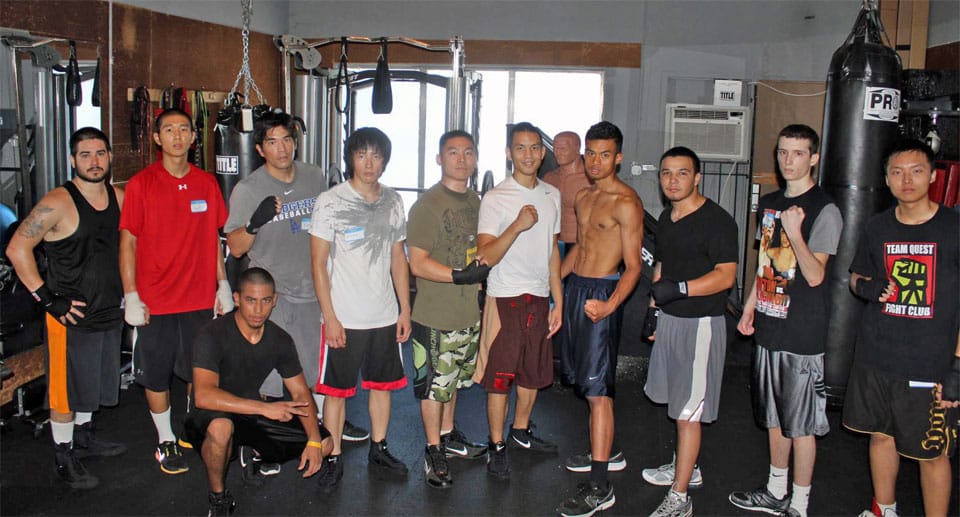
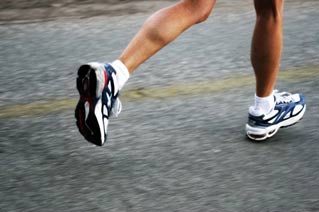
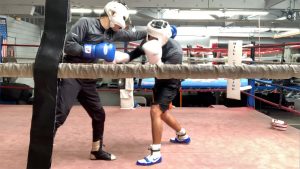
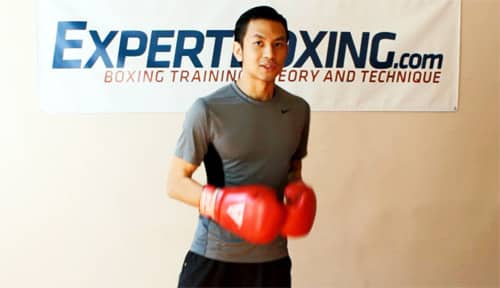
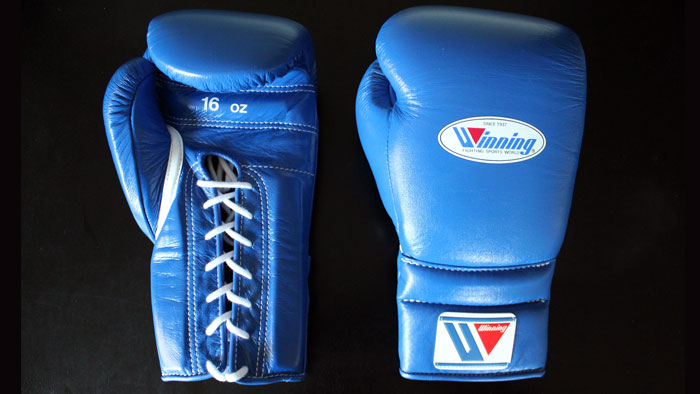

As usual, another home run, your push up and sit up guides break down these movements so well that I was wondering if you could do a pull up guide .
This is a good idea, I’ll do it eventually! And I’ll show you guys how to get 1-arm pull-ups as well…if you’re into that sort of thing.
A pull up guide would be nice too, btw great sit up guide.
Stuart McGill, professor of kinesiology at the University of Waterloo, in Ontario, Canada and perhaps the most renowned expert on the spine and lower back made a convincing case on the avoidance of certain movements that have been improperly used by coaches to strengthen the muscles traditionally associated with the core (abs, lower back).
Here’s something that will convince you to never do another situp in training:
“The NIOSH [National Institute of Safety and Health] have sponsored research that surveyed workers, and their data show that when lumbar loads exceed 3400N, the injury rates go up and interventions are recommended. The problem is that these are for average workers. Who’s average?
Now, the sit-up recruits torso and hip muscles that impose compressive load on the spine for the average male of about 3400N. Performing sit-ups uses some training capacity – compression plus repeated bending – to achieve training of the torso and hip flexors. But remember that this combination of load and motion is a potent cause of annulus collagen delamination.”
Too difficult to understand? Situps are bad for your spine. Stop doing them. I will and so will my athletes. Instead focus on movements that strengthen the core without compromising the spine.
Doing a sit-up doesn’t train your ab muscles to do the job for which they were designed – keeping your spine straight and secure and providing power for your movements. In everyday life, “the abdominals are braces,” says McGill.
The best way—for both your back and your beach body—to work your midsection is to do movements that challenge the muscles to perform the way they’re designed and expected to work in real life, and not to train muscles in isolation. “It’s important to have strong abs, but strong abdominals are not the only thing. You have your back extenders, your flexors, which are belly muscles, you have your oblique muscles. Working all of these muscle groups—the anatomical association known as “the core”—is essential to both back health and general athleticism.
I totally agree that sit-ups are on the weaker end of developing strong core muscles! Throughout my dance training, we were taught the best core exercises were performed from the body’s natural functional position…which is standing up and with a straight spine. The core’s task would be to hold balance and maintain integrity in the spine. Therefore the best core exercises would be when the core muscles were working to keep the spine straight, not to bend the spine.
With that said…sit-ups still have a place in boxing. When done correctly and without jerking the spine, there are still some benefits. There are many athletes, soldiers, fitness people, who perform thousands of these repetitions a year without any harm (their spines seem better off to me than the ones who don’t do ANY sit-ups). I’ve seen far more stressful movements in other sports that are terrible for the body and yet the athletes have been able to withstand the force through adapted technique and form.
This is why boxers jump rope. It is impossible to jump rope for 10-15 minutes with poor posture and hip/shoulder/ankle/knee mechanics. Jump rope in my opinion is the best conditioning tool besides sparring and shadow boxing FOR THE RING. I can hold planks for 5 minutes, but “planking” doesn’t make your abs scream like somebody is torching them with a flame thrower the same way sit up intervals do. In short, all the sit up haters forget boxers jump rope; one of the best postural exercises known to man. Google Gray Cook (internationally renowned physical therapist) and jump rope training. He praises its virtues with posture muscles and a long list of athletic benefits.
I think everyone has a different body, so things are diffrerent for each of us.
I don’t like sit ups or crunches but i really like plank and russian twists. And can jump rope for 15 mins wihtout getting tired.
As Johnny says: everyone must try and see if it works for themselves.
I’m in accord with BHOPE view on sit-ups. There are much better ways to build strong ab muscles without making a detrimental effect on your spine.
I know you don’t believe in weight training for boxing too much & I use mainly calisthenic exercises myself (push ups, dips, chin ups) to build upper body condition besides punch sprints of course. But a few exercises I do include using weights that I believe are much better for the core are Front Squats and Deadlifts because despite several other benefits of these 2 exercises which can only beneficial for boxing, they involve the strongest coordination between ground (feet) and upper body (hands) and activate the core most strongly of any exercise. Of course the deadlift is also a compressive exercise in some way but if performed with absolute strictest form maintaining a back arch it can safely strengthen the core in its entirety and if some curvature occurs it mimics the muscle activation of a sit up anyway. Also the front squat which forces the spine to be straight throughout the movement because of balance, achieves the kind of strengthening the doctor above is talking about imo. Aside from that I perform a twisting exercise holding a heavy weight plate with both hands close to my body with a straight back which I feel is also safe and beneficial if performed cautiously for a strong core. I don’t do sit ups or crunches at all anymore. I feel they build more endurance anyway in the core which is also important but is better developed through interval sprints on the bag anyway and naturally through other training.
Hello what kind fo exercises you recommend to do? Sit ups not that good?
Sit Ups are the most redundant of all “core” strength exercises; however, when performed correctly, WITH A NEUTRAL SPINE, they can be done safely and effectively. Try using a decline bench, a GHD, or a lumbar support (a towel rolled up under the lumbar curve can be used if you’re desperate), or even better don’t do them at all. There are many other exercises that target the abdominals and are safer and more effective.
Furthermore, any exercise professional will agree that compound movements in which the “core” is activated is more effective at strengthening the abdominals more than sit ups, pilates, or any other “core” strength movements. Why not just squat, deadlift, lunge, power clean, snatch, or jump? These exercises produce far greater improvements in performance, and when performed correctly under the guidance of a professional, have little or no risk associated with them.
Sit Ups (performed as demonstrated) contribute to bad posture, excessive kyphosis and decreased lordosis, neck poke, tight hip flexors and protracted scapulae, and more, look these words up and then have a look at your own posture, scary yes? Over time, postural deficiency causes a lack of mobilty, contributes to or causes injury, and limits an athlete’s ability to generate power and strength.
Still not convinced that Sit Ups are redundant? Then please speak to an exercise professional and get informed on the most efficient, safe and effective strength and conditioning exercises for your sport and you individually.
Sit Ups, (and push ups) are not the answer for any boxer, all boxers, or even some. Just because it was accepted in the past, doesn’t mean that it was or still is correct, exercise science and physiology has come a long way since Jack Dempsey’s days, unfortunately many trainers, sports and services have yet to catch up.
Squat, deadlift, lunge, power clean, snatch, jump don’t target the stomach muscles the same way. Once you factor in twisting sit-ups/crunches, those other exercises don’t have an equivalent. Sit-ups aren’t the best exercise for the core but they are still a common exercise and for those who are still going to do them…this guide will help.
I know you have one side of the story… but if that’s all you have against every single pro boxer out there I can only agree with you on it applied outside of boxing.
Deadlifts, squats, lunges ect dont simulate a boxing match, yeah they might strengthen your core but the reason trainers have you practice sit ups or crunches is so you can get up off the floor after you’ve been knocked on your ass quickly, it simulates something that would happen in an actual fight.
If we were going on ‘what is most effective’ at targeting the muscles we’d be told to bench a big massive weight so you can throw big powerful bombs but in reality, practicing push ups is far more worth while as you’re more likely to be throwing lots of lighter punches than one or two big shots in a boxing match.
I understand your point but whichever ‘exercise professional’ (not boxing professional im assuming) told you sit ups are totally redundant clearly isnt looking out for your best interests in the ring buddy.
Its odd all you guys post “expert” info against doing sit ups. You tube any pro boxer (ie Manny, Floyd, Mike Tyson!) and you will see them perform thousands of sit ups in their routine. There is definitely a place for sit ups. Those of you who are worried about bad posture are correct that sit ups can hurt your posture, just like push ups can cause you to have slouched shoulders, squats and dead lifts can cause lower back problems, and the list goes on. What this article is giving us boxers is a basic foundation to perform an exercise that is necessary for punching power and overall boxing endurance. Posture issues and the like are a part of the game in any sport or exercise program. It is good to be aware of but sit ups are still effective and still have their place in a boxers workout routine. The best info I think is be well rounded in all things, do everything will a balanced approach and you will be fine. Dont spend 2 hrs on the heavy bag only, dont spend your whole workout just jumping rope, balance with all workouts will lead to a solid foundation!
good article johnny
Hi. I want to know if using the ab roller has any of the negative effects for sit ups. Also, Johnny I know you’ve used the ab roller. Can you tell me the difference between the knee and the standing version and how many reps and sets to do for both of them? Thanks a lot.
I like the AB roller. Try 3 sets of 15 reps. If you can do, then do more.
Thanks for the reply. Are you talking about from the knee or standing position? I can only do 1-2 standing in a row right now.
Do it from whichever position you can. I like to do the standing position because it’s hard but the knee position isn’t bad either.
Johnny, do kicking drills actually train the core for punching power since u stand upright and rotate?
I could actually see that, yes. Although it might train the muscle power, it doesn’t develop your muscle coordination for punching.
criticalbench.com/gains/fmbp-worstabsever
all the wannabe exercise experts above, who box, Please read this article it might save your back long term and help you think outside your own box
Do you really think his patients are boxers? They are probably guys who sit in a chair/couch all day, while going weightlifting and doing sit-ups thinking they will get fit only to injure themselves eventually. It is highly unlikely that his patients receive the same training and conditioning as boxers.
The most common causes of back injury are as follows:
-Poorly conditioned muscles
-Muscle imbalances in the trunk
-Inflexibility in muscles crossing the shoulders and hips
-Poor technique
-Poor motor control of the spinal musculature
Because of the inherent instability of the spine, spine stiffness, and hence stability, is achieved by a complex interaction of stiffening structures (muscles and ligaments) along the spine and forming the torso wall. Balancing stiffness on all sides of the spine is more critical to ensuring stability than having high forces on a single side. Absolute endurance and strength is probably secondary in importance to the relationship between muscle groups, as muscle imbalances are a primary cause of back problems (e.g., people with low back problems often have weaker extensor strength relative to their flexor strength). This is not uncommon even among athletes, who are likely to be better at sit-ups than at back extensions. Conditioning of the muscles on all sides of the trunk is important.
Go to a boxing gym and see for yourself. If you’re going to think doing sit-ups is bad for your back, might as well tell all the gymnasts to stop doing crazy flips and twists. ANY exercise can be harmful when done incorrectly. With that said…the sit-up is perfectly fine. It’s been used for years and I have yet to witness any case of back injury with the sit-up, even amongst inexperienced athletes.
Hey Johnny. I do stomach crunches where just the shoulders and upper back come up off the floor. Is there much benefit for the core from this type of sit up or should I change to the kind of sit up that you are showing?
Try both and see for yourself.
How many days of the week can you do sit ups ? Please answer
Every day if you want.
May i know is plank and side plank do increase core strength and power too?
As usual Johnny comes with a excelente tip, I used to exhale on the top of the sit up, after read the article I tryied to exhale on the bottom (when change directions) and this makes the change esier. It’s a little more dificult to up whithout exhale but it’s better to exhale on the direction change.
Hehe…yes…that was a big game changing tip for me. Exhaling on the downward cycle is especially perfect for when you want to go really fast to break a record. 🙂
Well is there anyone here got a experience about a sitter (that sit at office whole day) how to perform well in sit up. Since i try like johnny say exhale when up, inhale when down, stop a position on curl position than make a life. For taking a break stop at top position. And my back spine real hurt. Believe me that the tip or any information be given by any individual is great help for someone (sitter) like me as the world are moving into a busy and waste time lifestyle.
Hey Johnny, what is your opinion on sit ups getting a bad reputation as an exercise that could cause low back complications? Recently, people are opting more for isometric stability hold exercises like planks for strengthening the abdominals, obliques, and the lower back. But I know for a fact that boxers have been performing millions of sit ups as a foundational core-strengthening exercise. Yet none of these boxers have ever reported severe back complications such as herniated discs. Do you also think doing sit ups can lead to back pain? I heard the US Army is also considering removing the sit up as a category in the PT.
Hi Johnny! I have a problem with sit-ups, because I have too big and bony tailbone. Yoga mat doesn’t help. I feel that my tailbone breaks up. What can I do? It’s right if i do another core exercises? For example crunches, leg raises, or another exercises? (I can’t speak english very well, sorry!)
Hey Johnny!
Great article! I was just curious; do crunches help in taking a body shot better than sit-ups? How many reps and how long would it take to develop ab muscle to effectively block one? I know you said it’s not about the number of reps, but from my experience, the time under tension principle hasn’t been very effective for me and kind of complicates things. Any advice would be greatly appreciated. Thanks!
Situps for me are bullshit because they don’t mimic the boxing mouvements because they are performed horizontally and boxing is a vertical sport.
I prefer to be punched while i’m hanging on a pullup bar.
Or the best exercise ever for rotational core: ROTATIONAL LANDMINE!
Sit-ups are a great exercise. Definitely not BS. They don’t mimic boxing movements and they don’t have to….they make your body plain and simple. Some movements are for strength & conditioning, others are for DRILLS (muscle memory and coordination). And with that said, different exercises work better for different people.
Hi A, I’m not an expert, but taking a body shot is all about bracing your core right before you get hit. So in other words, you can have a six pack and still go down with a good body shot. Far as reps, there isn’t really no magic number, however I do prefer to go for time. It just easier for me to track for time when mindlessly performing crunches or holding a plank for time.
I agree with Anonymous, I rarely do situps. But for some reason, rotational landmine doesn’t do much for me either.
Hi Johnny, are there any ab exercises that simulate hitting a heavy bag? The reason why I ask because when returning back to hitting the heavy bag after a long layoff, I can feel my core as if I never train abs before. And keep in mind that I’m still maintaining my ab routine during my layoff. Thank you.
If I could see a video of you hitting the bag, I could offer more insight on what I think is going on.
Okay cool, thank you. Eventually I’ll get a video of me hitting the heavy bag, it just ight now I’m taking time off since I’m kind of burnt out from boxing.
Thanks Johnny have been following your articles since I was actively in the Air Force and retired in 2015.
Talked with former Olympian Kelcie Banks at my Hotel Recently in Las Vegas.
Keep it up.. I am still going strong.. and still hungry…
Cheers………